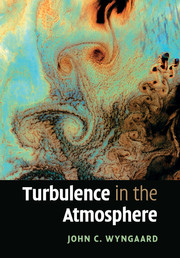Preface
Published online by Cambridge University Press: 11 April 2011
Summary
I doubt if many students have started out to be a “turbulence person.” I suspect it usually just happens, perhaps like meeting the person you marry. I was an engineering graduate student, nibbling at convective heat transfer, when a friend steered me to a turbulence course taught by John Lumley. It was not rollicking fun – we went through Townsend's The Structure of Turbulent Shear Flow page by page – but it was a completely new field.
I began to explore the turbulence literature, particularly that by the heavy hitters of theoretical physics and applied mathematics. To my engineering eyes it was impregnable; I would need much more coursework before I could even put it in a context. Today I can understand why those theoretical struggles continue. Phil Thompson, a senior scientist in the early NCAR explained it this way:
Lots of people have tried to develop a fundamental theory of turbulence. Some very well known people have given up on it. But I just can't give up on it – it's like a beautiful mistress. You know that she treats you badly, she's being ornery, but you just can't stay away from her. So periodically, this question comes up again in my mind, and I keep casting about for some different and simple and natural way of representing the motion of a fluid, and some way of treating the analytical difficulties. And I seem to get a little bit closer sometimes …
- Type
- Chapter
- Information
- Turbulence in the Atmosphere , pp. ix - xiiPublisher: Cambridge University PressPrint publication year: 2010



